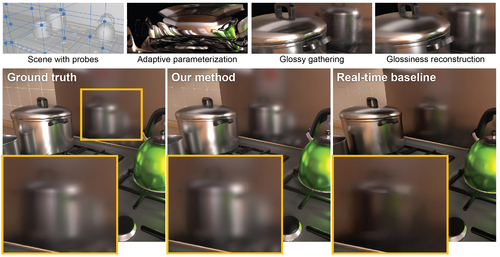Pre-recorded Sessions: From 4 December 2020 | Live Sessions: 10 – 13 December 2020
4 – 13 December 2020
Pre-recorded Sessions: From 4 December 2020 | Live Sessions: 10 – 13 December 2020
4 – 13 December 2020
#SIGGRAPHAsia | #SIGGRAPHAsia2020
#SIGGRAPHAsia | #SIGGRAPHAsia2020











Date/Time:
04 – 13 December 2020
All presentations are available in the virtual platform on-demand.
Lecturer(s):
Simon Rodriguez, Institut national de recherche en informatique et en automatique (INRIA), Université Côte d'Azur, France
Thomas Leimkuhler, Institut national de recherche en informatique et en automatique (INRIA), Université Côte d'Azur, France
Siddhant Prakash, Institut national de recherche en informatique et en automatique (INRIA), Université Côte d'Azur, France
Chris Wyman, NVIDIA, United States of America
Peter Shirley, NVIDIA, United States of America
George Drettakis, Institut national de recherche en informatique et en automatique (INRIA), Université Côte d'Azur, France
Bio:
Description: Recent rendering advances dramatically reduce the cost of global illumination. But even with hardware acceleration, complex light paths with multiple glossy interactions are still expensive; our new algorithm stores these paths in precomputed light probes and reprojects them at runtime to provide interactivity. Combined with traditional light maps for diffuse lighting our approach interactively renders all light paths in static scenes with opaque objects. Naively reprojecting probes with glossy lighting is memory-intensive, requires efficient access to the correctly reflected radiance, and exhibits problems at occlusion boundaries in glossy reflections. Our solution addresses all these issues. To minimize memory, we introduce an adaptive light probe parameterization that allocates increased resolution for shinier surfaces and regions of higher geometric complexity. To efficiently sample glossy paths, our novel gathering algorithm reprojects probe texels in a view-dependent manner using efficient reflection estimation and a fast rasterization-based search. Naive probe reprojection often sharpens glossy reflections at occlusion boundaries, due to changes in parallax. To avoid this, we split the convolution induced by the BRDF into two steps: we precompute probes using a lower material roughness and apply an adaptive bilateral filter at runtime to reproduce the original surface roughness. Combining these elements, our algorithm interactively renders complex scenes while fitting in the memory, bandwidth, and computation constraints of current hardware.
